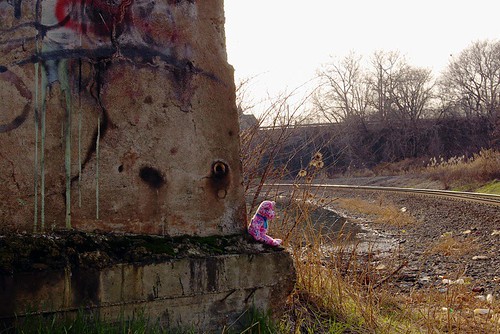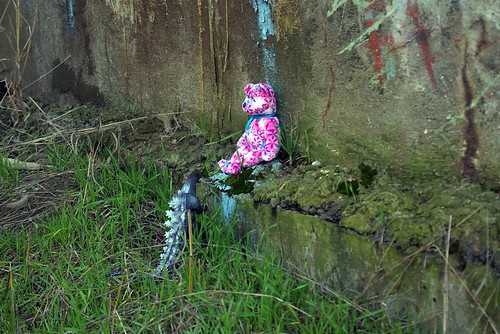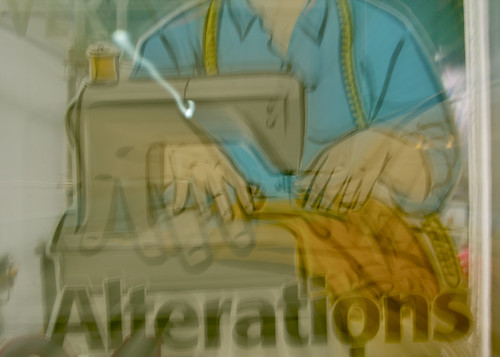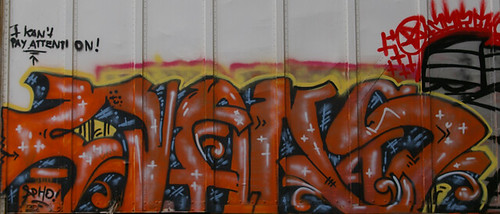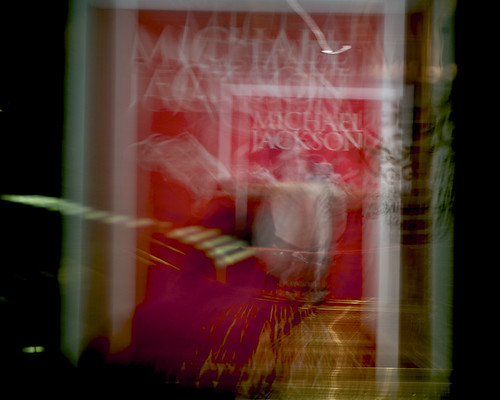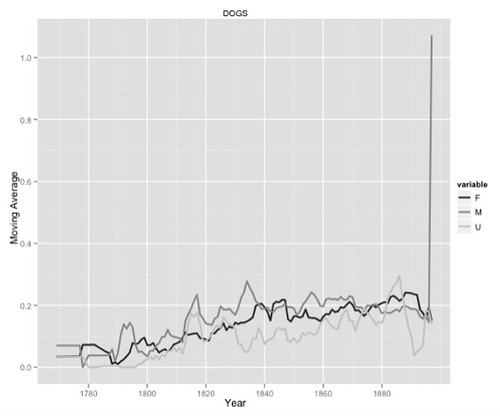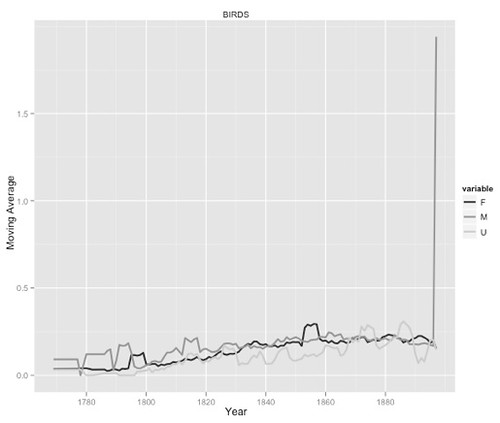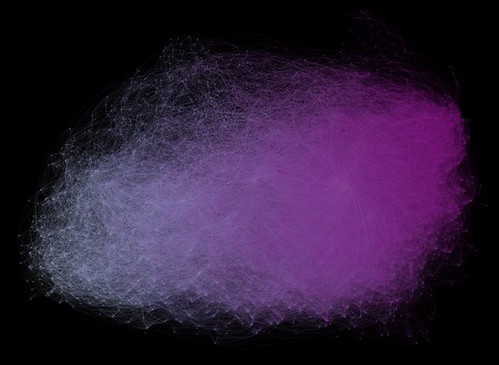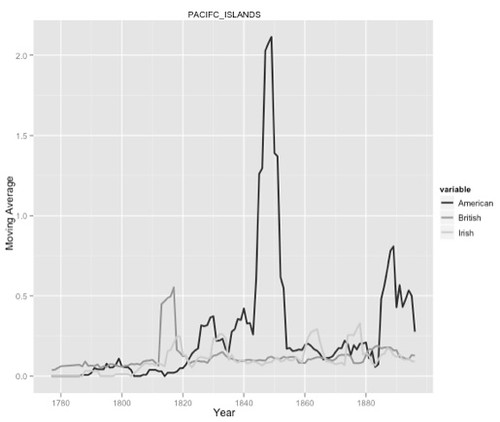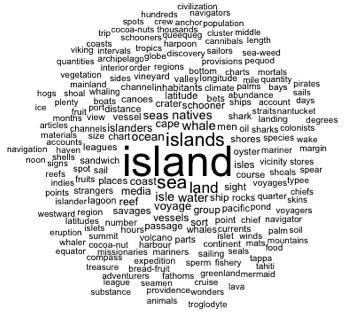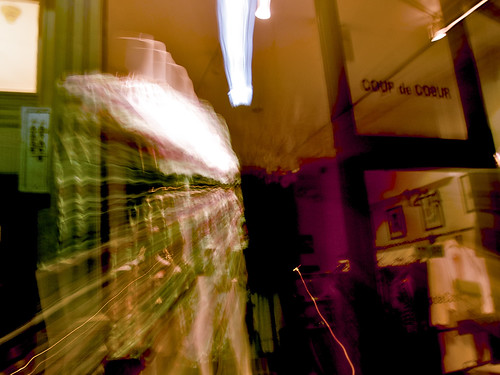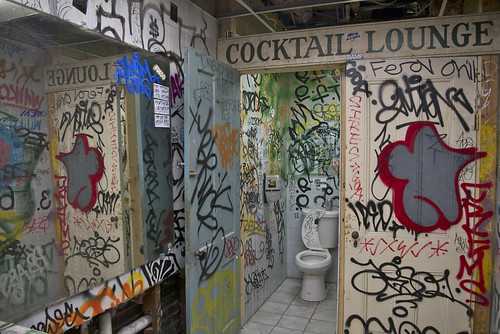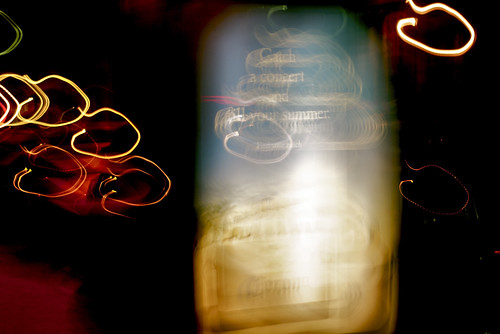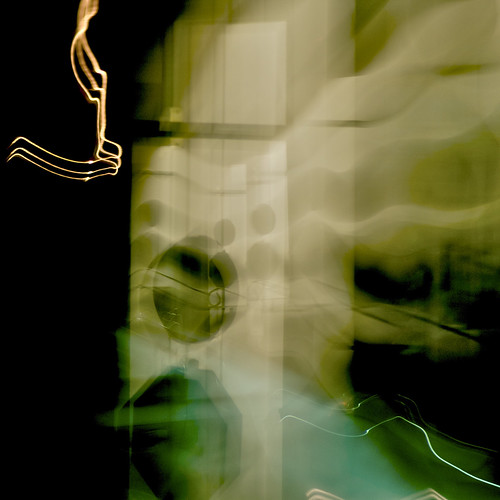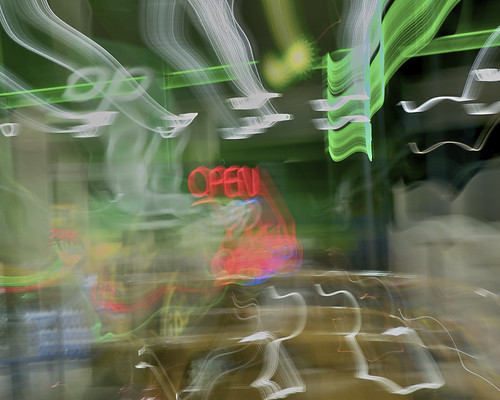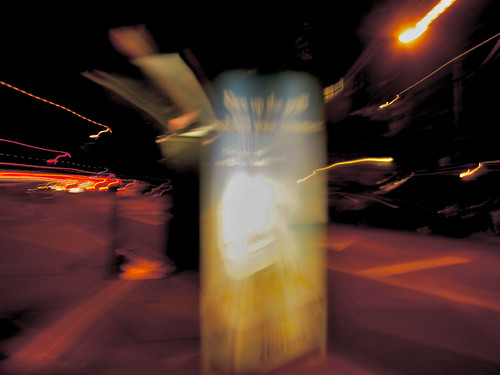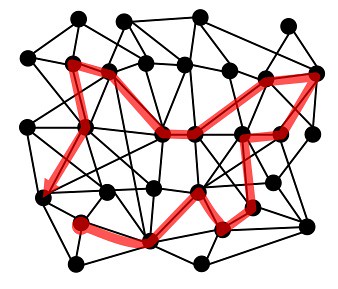People in the United States, a country in which painkillers are routinely overprescribed, now consume more than 84 percent of the entire worldwide supply of oxycodone and almost 100 percent of hydrocodone opioids. In Kentucky, to take just one example, about one in fourteen people is misusing prescription painkillers, and nearly 1,000 Kentucky residents are dying every year.
So it’s more than a little odd that CADCA and the other groups leading the fight against relaxing marijuana laws, including the Partnership for Drug-Free Kids (formerly the Partnership for a Drug-Free America), derive a significant portion of their budget from opioid manufacturers and other pharmaceutical companies. According to critics, this funding has shaped the organization’s policy goals: CADCA takes a softer approach toward prescription-drug abuse, limiting its advocacy to a call for more educational programs, and has failed to join the efforts to change prescription guidelines in order to curb abuse. In contrast, CADCA and the Partnership for Drug-Free Kids have adopted a hard-line approach to marijuana, opposing even limited legalization and supporting increased police powers.
Sunday, August 31, 2014
Follow the money, anti-marijuana edition
Back to Basics: Green, Yellow, and Wet
After all the recent shaky-cam theatrics I figured it was a time for some of the basics. I shot these yesterday in Liberty State Park in Jersey city, NJ.
Saturday, August 30, 2014
Innovation and Hype
Over at The Economist, Babbage has been looking at the hype driving cycles of innovation & focuses on work done by the Gartner Group.
Back in the late 1990s, Babbage noticed that the waves of innovation had begun to speed up (see “Catch the wave”, February 18th 1999). The industrial waves Kondratieff observed in the 1920s came every 50-60 years or so. By the late 1990s, fresh ones were arriving twice as often. Fifteen years on, their frequency appears to have doubled yet again. Waves of new innovations now seem to be rolling in every 10 to 15 years.
It is not hard to see why. Rather than leave things to chance, all the big industrial countries nowadays have legions of engineers and scientists scanning the literature for ideas that portend blockbuster innovations capable of carving out new markets. Meanwhile, social networking has made it easier than ever for money and talent to join forces in order to hustle the innovation process along. In addition, today’s far broader channels of communication ensure that any new way of doing things becomes instantly known to everyone interested.
Sometimes too well-known. Indeed, the hyperbole surrounding many fledgling technologies, especially those in their early stages of development, can prove a costly distraction for the unwary. Firms on the fringe of some new development may have difficulty filtering the message from the hubbub, allowing expectations to lose touch with reality. Believing some emerging technology (say, 3D printing) is about to transform their industry, they may make aggressive investments that will prove disastrous if the technology’s impact turns out to be less than anticipated.
Friday, August 29, 2014
Hello, Connected Courses!
My name’s Bill Benzon and I’m an independent scholar. I’ve decided to get back into teaching with a course/workshop on graffiti which I’m tentatively calling The Academy of the Wall.
I’ve been online since before the web and have developed a fairly sophisticated online ecosystem. Oh, the technology is all OTS (off the shelf), nothing fancy. But I’ve been working it for a while and have a feel for how things flow. When there’s a disturbance in the force, I feel it–; everyone does, but not every one is mindful of what they sense.
I’ve been blogging here at New Savanna since April of 2010 and hit my 2500th post on 14 July, when I posted a rough guide to New Savanna. I’ve also made it more directly accessible as a page linked at the top of the blog.
You might be particularly interested in two posts in which I tell about my publishing history:
- Academic Publishing, A Personal History, Part 1: An Outside Move
- Academic Publishing, A Personal History, Part 2: To the Blogosphere and Beyond
The first starts back in the previous millennium with my first academic publications, runs though an experiment in microfiche publication undertaken by the Association for Computational Linguistics, and ends up with a refereed journal started online, PsyArt: An Online Journal for the Psychological Study of the Arts, where I’ve published a number of papers. The second is about listserves and the blogosphere.
My experience at The Valve was crucial. Though it’s still online, it’s no longer functioning; it’s simply a repository. The Valve was a group blog that centered on literature and literary culture. There were a dozen or so writers with publication privileges at any one time, though the roster changed from time to time. Some of the discussions got quite lively, and some of those fell into hopeless dispute. On the whole it was a floating seminar in literature and culture studies with a wide variety of participants of varying backgrounds.
Here’s a passage about those conversations that’s worth keeping in mind:
...much of the discussion took place between people of very different intellectual backgrounds and experience, with only a few of us being card-carrying academics—and, of course, though I may carry a card, I do so only as an independent scholar not as a member of this or that faculty. That makes for an interesting and often challenging environment, as it’s very difficult to carry the day by pulling rank. In that environment the only rank you have is what people give you. Institutions don’t much matter, unless of course, you grant them status.
I look forward to chatting and learning with you in the next few months.
Friday Fotos: Sparkychan and Gojochan Retrospective!
Back in 2006, when I first started photographing graffiti, I thought it would be interesting to get some kid's toys and photograph them amid the gritty territory I was exploring. So I bought two, a plastic model of Gojira (Godzilla in America), which promptly became Gojochan, and a hot-pink plush bear, Sparkychan. Here's some stories about their life: The Collected Adventures of Sparkychan & Gojochan (Thus Far). I've posted some photos of them below.
* * * * *
Sparkychan meditating on the awesomeness of existence.
Gojochan raging against the dying of the night.
Gogochan is attracted to Sparkychan's inner peace.
Universality, alive and well?
This contrast, between a celebrated and largely unread classic [Alessandro Manzoni, The Betrothed, 1827] and an enduringly popular classic [Carlo Collodi, The Adventures of Pinocchio,1881], shows that a key to a work’s ongoing celebrity is that dangerous term: universality. We hold the word with suspicion because it tends to elevate one group at the expense of another; what’s supposedly applicable to all is often only applicable to a certain group that presumes to speak for everybody else. And yet certain elements and experiences do play a major role in most of our lives: falling in love, chasing a dream, and, yes, transitioning as Pinocchio does from childhood to adolescence. The classic that keeps on being read is the book whose situations and themes remain relevant over time—that miracle of interpretive openness that makes us feel as though certain stories, poems, and plays are written with us in mind.In his Defence of Poetry, Percy Bysshe Shelley writes that great literature is “a fountain forever overflowing with the waters of wisdom and delight; and after one person and one age has exhausted all its divine effluence … another and yet another succeeds, and new relations are ever developed.” Shelley understood that some works have the magical capacity to resist closure—they read us as much as we read them, by revealing what is most important to our lives individually and our age collectively. Each great book, Shelley writes, is “the first acorn, which contained all oaks potentially”: the meaning we derive from literature changes over time, though the words on the page remain the same.
To leave or not to leave, that is the audience's right
These days most of us will sit through the end of a show even if it bores us to tears. It wasn't always thus, writes William Grimes in The NYTimes:
In the United States, the balance of power began to shift in the mid-19th century. “The performers and the managers began to seek a more upscale audience, which demanded a more respectable place, where their wives and, more important, their daughters could attend,” Mr. Butsch said. “The owners needed to tame the older, wilder audience.”Continue reading the main storyContinue reading the main storyAudiences became more docile as the middle classes learned to revere culture and to regard theatergoing as a quasi-religious rite. “The music concert, the theater performance, these became sacred,” Mr. Butsch said. “You went to pay homage.”That legacy lingers. Many respondents reported feelings of shame, embarrassment or personal failure at leaving a performance before the end. Angelica Alcantara, an editor of health care booklets for an insurance company, sat through the first half-hour of Terrence Malick’s “Tree of Life” at a Seattle movie theater before scanning the faces around her to see if anyone else was registering the same befuddlement she was experiencing. She not only walked out, but she also demanded a refund and got it. Still, she left with an uneasy feeling of having failed.“It’s like you’re giving up on the director’s vision,” she said.
Thursday, August 28, 2014
Reading Macroanalysis 7.2: Hyperobjects and Large Finitude
As a way of transitioning to a concluding post in which I will recast Jockers’ work in evolutionary terms, I want to look at a passage from Tim Morton’s Hyperobjects, a book I worked through several weeks ago. Why? Because the “big data” techniques Jockers’ is using deal in hyperobjects.
When Jockers built a model of literary influence in the 19th Anglo-American novel, he constructed a model of a hyperobject: roughly, a collective mentalité or Geist unfolding through several interlinked populations over the course of a century. And the model he built took the form of a graph with 3,346 nodes (each representing a text) and 165,770 edges (each a similarity relationship between the connected texts) where each node is a point in space with 578 dimensions, with each dimension scoring a single stylistic or thematic feature of the text. That model is big, but it is also finite.
And that’s where Morton comes in, with a passage on large finitude (Hyperobjects, pp. 60-61):
These gigantic timescales are truly humiliating in the sense that they force us to realize how close to Earth we are. Infinity is far easier to cope with. Infinity brings to mind our cognitive powers, which is why for Kant the mathematical sublime is the realization that infinity is an uncountably vast magnitude beyond magnitude. But hyperobjects are not forever. What they offer instead is very large finitude. I can think infinity. But I can’t count up to one hundred thousand. I have written one hundred thousand words, in fits and starts. But one hundred thousand years? It’s unimaginably vast...The philosophy of vast space was first opened up by Catholicism, which made it a sin not to suppose that God had created an infinite void. Along with the scholastic view of substances, Descartes inherited this void and Pascal wrote that its silence filled him with dread. Vast non-human temporal and spatial magnitudes have been physically near humans since the Romantic period, when Mary Anning discovered the first dinosaur fossil (in 1811) and natural historians reckoned the age of Earth. Yet it was not until Einstein that space and time themselves were seen as emergent properties of objects. The Einsteinian view is what finally gave us the conceptual tools to conceptualize the scope of very large finitude.
I’ve come to believe that is one of the most important passages in the Morton’s book.
Students build better apps
From today's NYTimes we learn that "students are showing up the universities that trained them by producing faster, easier-to-navigate, more informative and generally just better versions of the information systems at the heart of undergraduate life." Surprise, surprise! The students grew up with computers while the programmers who built the systems that they're sending to the showers probably didn't encounter computers until their teens or even adulthood.
“Students are always more entrepreneurial and understand needs better than bureaucracies can,” said Harry R. Lewis, the director of undergraduate studies for Harvard’s computer science department, “since bureaucracies tend to have messages they want to spin, and priorities they have to set, and students just want stuff that is useful. I know this well, since students were talking to me about moving the Harvard face books online seven years before Zuckerberg just went and did it without asking permission.”
Wednesday, August 27, 2014
Reading Macroanalysis 6.4: Themes and how they evolve over time
Note: This may be the most important post in the series. But it’s a long way through, 6000 words or so. Fortunately, there are a lot of illustrations, and much of the argument is in those illustrations.
This will concludes my examination of the “Theme” chapter from Matthew Jockers, Macroanalysis: Digital Methods and Literary History. First I say a word or three about topic modeling. Then I review Jockers’ own findings. Then I ride one of my current hobby horses, Leslie Fiedler’s argument in Love and Death in the American Novel. First I look the waxing and waning of themes through the 19th century and then I return to Moby Dick and move on briefly to The Adventures of Huckleberry Finn. I conclude with some informal remarks about argument, evidence, epistemology, and interface design.
Operationalizing the Idea of Theme
When I was originally thinking about this post I decided that, since I’d already explained topic modeling elsewhere (e.g. HERE), there was no point in doing it again. But I’ve now decided to do it again just to make the point that we’re operating in an “operationalized” intellectual world and we must be aware of that.
For example, while Jockers has identified 500 themes (a term in ordinary language) in his corpus of 3346 novels, it would be somewhere between misleading and outright mistaken to say that he discovered 500 themes. For that would imply that it could have been 386 or 617 or 239 or any other number of themes, but that, no, it turns out that there are 500 of them, no more, no less.
Jockers has 500 themes because he ‘instructed’ his algorithm to prepare that many. He could have instructed it to prepare any number of topics (a term of art in corpus linguistics) he wished, 386, 617, or 239, for example. There’s no discovery involved. What’s involved is more like tuning. Jockers explored various possibilities and 500 seemed like a useful number of topics.
What’s going on?
Topic analysis depends on the fact that the words used to state some theme are going to occur together in any text where that theme shows up. It’s all about context. That fact isn’t of much use if you’re dealing with only a handful of themes in a small body of text. But if you’ve got a large body of texts with an appreciable number of themes, then there’s a way you can get a computer to list the words in each theme, more or less.
If a given text doesn’t contain a given topic then the words associated with that topic won’t appear in that text, obviously. Oh, some of them might, but not all of them. So, the computer does a massive comparison of the words that occur throughout the corpus. Just how it does this is irrelevant at the moment, as least, it’s irrelevant if you’re willing to trust that the researchers who invented the technique know what they’re doing. One interesting thing about the technique is that the results improve as the corpus gets larger–assuming you’ve got the computer power needed to crunch the data. That’s because a larger corpus will have a larger number of topics and each different topic will appear in contrast to a larger universe of topics. It’s the contrast that the computer’s looking for.
But, as I’ve said above, in order to run the algorithm, you’ve got to specify how many topics you’re looking for. If the number is too high the algorithm returns (p. 128)
topics lacking enough contextual markers to provide a clear sense of how the topic is being expressed in the text; setting the number too low may result in topics of such a general nature that they tend to occur throughout the entire corpus.
But you don’t necessarily want to run your algorithm against the entire text as a single analytical unit if the texts are individually large, as is the case with novels. What happens then is that just about any topic can be found in a given text. Jockers determined that he needed to slice his texts into 1000 word chunks. That is, each whole novel is searched, but the algorithm treats each 1000-word segment of a novel as an independent text for the purpose of determining word co-occurrence.
This has the benefit that it is possible to track the distribution of a given topic in a novel (Jockers gives examples on pp. 142-43). Thus topic modeling returns useful results both at the macro scale of the whole corpus and the meso scale of the individual text (on scales, see Reading Macroanalysis 5: An Interlude on Scale: Micro, Meso, and Macro in this series).
What the algorithm returns for each topic is a weighted list of words for that topic, where the weighting of a word is proportional to its frequency in the topic. Jockers’ preferred representation for a topic is a word cloud, such as this one:
But it’s not convenient to use those clouds as devices for referring to a given topic. For that purpose it’s useful to have names. The general practice is to devise a name from the words most prominent in the topic. Thus, Jockers has called that topic TENANTS AND LANDLORDS.
Tuesday, August 26, 2014
Sam Clemens at the Cotton Club: The Adventures of Huckleberry Finn
I originally published this at the end of April, 2010. I'm bumping this to the top of the stack as it is directly relevant to my current work on Matt Jockers' Macroanalysis.
This is the second post in a series on Race in the Symbolic Universe. The first one is here. (Cross-posted at The Valve.)
In Playing in the Dark, a set of essays on race in American literature, Toni Morrison is led "to wonder whether the major and championed characteristics of our national literature . . . are not in fact responses to a dark, abiding, signing Africanist presence. . . . Through significant and underscored omissions, startling contradictions, heavily nuanced conflicts, through the way writers peopled their work with the signs and bodies of this presence--one can see that a real or fabricated Africanist presence was crucial to their sense of Americanness." That is to say, the sense of American identity embodied in our literature is at least partially achieved through reference to African Americans, with various Prosperos continually defining themselves against various Calibans.
In discussing The Adventures of Huckleberry Finn Morrison notes "the apparently limitless store of love and compassion the black man [Jim, the escaped slave] has for his white friend and white masters" and points out that Huck and Tom subject Jim to "baroque, endless, foolish, mind-softening" humiliation, which Jim accepts at face value. The question is: What is Mark Twain thus revealing about the role black people have in the white psyche? What needs do whites thus satisfy?
The basic story of Huckleberry Finn is well-known: Huck runs from home to escape his alcoholic and abusive father and is joined by Jim, a slave running for freedom. They ride a raft going south on the Mississippi and have adventures along the way. Jim is captured, Tom Sawyer arrives and helps Huck to rescue him. There are complications but, in the end, Jim is free and Huck decides to continue fleeing.
Let's take a look at the last sixth or so of the book, which is about the elaborate shenanigans Tom and Huck undertake toward the end of rescuing Jim. This is where they inflict most of the humiliation on Jim, all in the name of freeing him. Freeing him from what?
Monday, August 25, 2014
From “Distant” Reading to Crowdsourcing, or, the Rise of Citizen Scholars
Distant reading of ALL texts, yes. But also, every text must be read by a human reader. This will require crowd-sourcing† from skilled amateur readers. This is the only way, for example, we’ll be able to deal with the mass of popular culture texts that must be accounted for.
Distant reading and dark matter
One of Moretti’s arguments in favor of “distant” reading is that most of the texts that have been written never receive consideration under the standard (now traditional) regime of literary criticism. Under that regime reading is restricted to a relatively small handful of canonical texts. What of all those unread texts, the “dark matter” of literary culture (to borrow a metaphor from astrophysics)? How do we take account of them? Yet they must play some role in literary culture. How are we going to understand that role if we don’t read them?
The problem, Moretti pointed out, is that no one has time to read all of the texts. One critic can read several hundred, a thousand texts, or so. But not the 10s of thousands of novels published in, say, the nineteenth century alone. Moretti’s solution? Use computers to scan through all those texts and analyze them in this way or that.
I have no problem with this computer mediated “distant” reading as Moretti calls it. no problem at all. But, as a result of undertaking a close look at Matthew Jockers’ Macroanalysis I’ve reached the tentative conclusion that in fact a much larger fraction, if not all, of the texts in that unread dark matter must be read by humans. Perhaps not in the style of old-fashioned close reading, but they must be read in order to identify features and properties that computers cannot (yet) identify.
Time to change the world, at 3Quarks Daily
My monthly column is online over there at 3 Quarks Daily. Here's the opening paragraphs:
Adolescents seem gifted in the belief that, if only the adults would get out of the way and grow up, the world would be a much better place. In that sense I am still, at 66 going on 67 (Pearl Harbor Day of this year) an adolescent. I still believe that the world needs changing, though it’s been decades since I naively thought that letters to The New York Times were a reasonable means to that end. And I still believe that it’s the adults that need changing.But I must also move forward in the realization that I too am an adult, and have been so for some time now.What to do?
Post-Graffiti?
At Graffuturism, "A Look at Graffiti’s Evolution and Progression 2011 in the Artists own words. Part 1" (from 2011). The Question, from GF:
Coming back from Art Basel Primary Flight 2010 i was surprised firstly about the turnout of so many talented artists in one place, Secondly the direction it seemed many artists where taking. I noticed a very Conceptual and Abstract direction in many writers gallery and wall work. I was very impressed. My question is in this Post-graffiti age as some like to label it, where do you see the art form progressing and Why? Second part to that question is how has your personal work evolved in this current state of post-graffiti if it has effected it at all.
How & Nosm:
First of all we think the term Post Graffiti sounds like the graffiti as we know it, which was based mainly on the art of stylizing letters, is completely out of the picture or even dead. Yet if you look close there is a lot street bombing and train writing going on all around the world like back in the days. Anyway, in our eyes graffiti keeps just evolving like it has in the past. Having new talents from different parts of the planet , the internet and better work tools helps our movement grow faster and it keeps bringing original styles to the surface. And yes graffiti has fused with other ” art forms” but it still stands strong on its own and always will be called graffiti. It is one of the most talked about art forms right about now. I mean we still use the spray can, right?
Jurne:
First, I’d like to say that I don’t like the term post-graffiti, or post-graffiti age. I think that it is important at a time when there are many influences from other art forms: painting, sculpture, photo, design, etc, as well as the influence of media on graffiti, and vice-versa, in a cyclical fashion so that media and advertising informs graffiti, graffiti informs these things, they are adopted into media outlets (television, print campaigns, etc) and in turn reshape graffiti as a response to them, and so on and so on…it’s important to call graffiti what it is: graffiti.If it’s illegal and it’s main focus is the letterform(s), it’s graffiti. Calling it post-graffiti takes away from the potency that graffiti has as an illegal art form. We shouldn’t feel the need to re-describe what we do in light of aesthetic changes. What is important is the urgency and power that graffiti has, regardless of the image quality.
Sunday, August 24, 2014
Japanese Bath houses
Japanese public bathhouses, also called sento. From the outside, some of them look like Shinto shrines or Buddhist temples. Inside, they have many features that help to create a space for retreat and relaxation. More than just a place to wash the body, bathhouses have long served as a social forum for the local community. This time on Japanology Plus, we'll explore the wonderful world of bathhouses with our guest Machida Shinobu, a sento expert. In Plus One: bathhouse etiquettes for beginners.
Why do bathhouses (in Tokyo) look like temples? When did public bathhouses become divided into a male and a female side, and why?
The Academy of the Wall: Transnational Culture in the 21st Century
What are the prospects of using graffiti as the foundation of a transnational cultural academy?
By graffiti I don’t mean just anything inscribed on walls. I mean something more specific, the aerosol art that started in Philadelphia and New York City in the late 1960s and early 1970s and that had gone world-wide by the end of the century. It’s the first form of abstract art to reach a mass audience.
As vandalism, it exists on the borders of existing art culture.
It is nowhere and everywhere.
It is the future.
Saturday, August 23, 2014
Reading Macroanalysis 6.3: DOGS and BIRDS, or, the hermeneutics of screwing around
I started exploring Jockers’ 500 themes in earnest after I’d spotted this graph, which depicts the occurrence of the DOGS topic by gender over time:
I saw that spike at the end, for male authors, and thought Call of the Wild. But alas, that can’t be, as the book isn’t in the database.
In any event, I’ve just now been looking through some more of theme plots and found with this one, for BIRDS by gender over year:
Bingo! And I wasn’t even looking for it!
The overall shape is the same as the one for DOGS, including the spike in the male line. Are we looking at the same book or books in that spike?
EKG @ Graffuturism: Degree Oblivion (an autobiographic theoretical essay) [abridged]
EKG states the case:
the passion drive output strategy and remnants of an artist’s street actions schematize, render and broadcast a portrait of the artist’s identity and personality. choosing to use illegal aesthetic manifestations as a means of transmission imbues the artists statement with the aura of rebellion and revolution, inherently defining them as anti-status quo marks, ironically defined by the very structures and mechanisms that deny and censor them, the dominant class evident metaphorically in every detail of the architecture and infrastructure of any urban space, but individuals are the heart of all cities, semiotic bootleggers, values and transactions defined by individualistic human motives, love affairs and communities connected, alternative distribution channels, a mutant frequency, an underground wavelength, an under-cover-of-dark methodology protocols operations algorithms, each illegal aesthetic action creating a meta-tag, a link to an identity, another philosophy, another universe of singular depth and horizon, a data flux across aetherial transcircuitry, through arterial architecture, these signs of creation and signifiers of life decoordinate and re-systematize en masse representing the pulse of the city as a grid of many intersecting matrices, the heartbeat of the city, the voice of the populace, the will of the peopleLet if flow….
Friday, August 22, 2014
The Minerva Project: The unbundling continues
Can Minerva college unbundle (see this post) an elite undergraduate education from the matrix of facilities and services that currently makes it so expensive?
Minerva is an accredited university with administrative offices and a dorm in San Francisco, and it plans to open locations in at least six other major world cities. But the key to Minerva, what sets it apart most jarringly from traditional universities, is a proprietary online platform developed to apply pedagogical practices that have been studied and vetted by one of the world’s foremost psychologists, a former Harvard dean named Stephen M. Kosslyn, who joined Minerva in 2012.Nelson and Kosslyn had invited me to sit in on a test run of the platform, and at first it reminded me of the opening credits of The Brady Bunch: a grid of images of the professor and eight “students” (the others were all Minerva employees) appeared on the screen before me, and we introduced ourselves. For a college seminar, it felt impersonal, and though we were all sitting on the same floor of Minerva’s offices, my fellow students seemed oddly distant, as if piped in from the International Space Station. I half expected a packet of astronaut ice cream to float by someone’s face.Within a few minutes, though, the experience got more intense. The subject of the class—one in a series during which the instructor, a French physicist named Eric Bonabeau, was trying out his course material—was inductive reasoning. Bonabeau began by polling us on our understanding of the reading, a Nature article about the sudden depletion of North Atlantic cod in the early 1990s. He asked us which of four possible interpretations of the article was the most accurate. In an ordinary undergraduate seminar, this might have been an occasion for timid silence, until the class’s biggest loudmouth or most caffeinated student ventured a guess. But the Minerva class extended no refuge for the timid, nor privilege for the garrulous. Within seconds, every student had to provide an answer, and Bonabeau displayed our choices so that we could be called upon to defend them.
And this college is intended as a for-profit enterprise. Founded by an entrepreneur, Ben Nelson, it's already attracted $25M in investment. But Minerva won't produce any MOOCs, though studies will be fee to avail themselves of existing MOOCs.
Each year, according to Minerva’s plan, they’ll attend university in a different place, so that after four years they’ll have the kind of international experience that other universities advertise but can rarely deliver. By 2016, Berlin and Buenos Aires campuses will have opened. Likely future cities include Mumbai, Hong Kong, New York, and London. Students will live in dorms with two-person rooms and a communal kitchen. They’ll also take part in field trips organized by Minerva, such as a tour of Alcatraz with a prison psychologist. Minerva will maintain almost no facilities other than the dorm itself—no library, no dining hall, no gym—and students will use city parks and recreation centers, as well as other local cultural resources, for their extracurricular activities.The professors can live anywhere, as long as they have an Internet connection. Given that many academics are coastal-elite types who refuse to live in places like Evansville, Indiana, geographic freedom is a vital part of Minerva’s faculty recruitment.The student body could become truly global, in part because Minerva’s policy is to admit students without regard to national origin, thus catering to the unmet demand of, say, prosperous Chinese and Indians and Brazilians for American-style liberal-arts education.The Minerva boast is that it will strip the university experience down to the aspects that are shown to contribute directly to student learning. Lectures, gone. Tenure, gone. Gothic architecture, football, ivy crawling up the walls—gone, gone, gone. What’s left will be leaner and cheaper.
And there's this:
Reading Macroanalysis 7.1: Visualizing the Geist of 19th Century Anglo-American Literary Culture
Last year Alan Liu published a remarkable essay, “The Meaning of the Digital Humanities” (PMLA 128, 2013, 409-423), in which he argued that the most recent work in digital humanities has come within hailing distance of operationalizing the vague humanistic notion of the human spirit conceived as a collective entity operating in and through world history. To be sure, that’s not quite what he said and did, but that’s what his discussion of Ryan Heuser and Long Le-Khac, A Quantitative Literary History of 2,958 Nineteenth-Century British Novels (May 2012, 68 page PDF), amounts to. In effect their corpus is a proxy for the 19th Century British Geist, making their analysis of that corpus an analysis of that Geist.
We find this paragraph near the end of his essay (pp. 418-419):
It is not accidental, I can now reveal, that at the beginning of this essay I alluded to Lévi-Strauss and structural anthropology. Structuralism is a midpoint on the long modern path toward understanding the world as system (e.g., as modes of production; Weberian bureaucracy; Saussurean language; mass, media, and corporate society; neoliberalism; and so on) that has forced the progressive side of the humanities to split off from earlier humanities of the human spirit (Geist) and human self to adopt a worldview in which, as Hayles says, “large-scale multicausal events are caused by confluences that include a multitude of forces . . . many of which are nonhuman.” This is the backdrop against which we can see how the meaning problem in the digital humanities registers today’s general crisis of the meaningfulness of the humanities. The general crisis is that humanistic meaning, with its residual yearnings for spirit, humanity, and self—or, as we now say, identity and subjectivity—must compete in the world system with social, economic, science-engineering, workplace, and popular-culture knowledges that do not necessarily value meaning or, even more threatening, value meaning but frame it systemically in ways that alienate or co-opt humanistic meaning.
Those “large-scale multicausal events” are, in effect, the workings of Geist. The fact that we can now visualize proxies for that collective spirit, that Geist, and do so in an explicit and rigorous way means that we are now in a position to recoup that older humanistic learning, albeit in a new and strange register.
In the final analytic chapter of Macroanalysis Jockers presents two visualizations of the Geist of 19th Century Anglo-American literary culture. Here’s one of them:
Though it is difficult to see at this crude resolution, that cloud is in fact a graph with 3,346 nodes and 165,770 edges. Each node represents one of the texts in Jockers’ corpus and the edges represent a measure of similarity between nodes. Each text has been scored on 578 stylistic and thematic features and similarity computed accordingly.
Thursday, August 21, 2014
Reading Macroanalysis 6.2: Theme, Moby Dick in the Context of Literary Culture
In this post, which is a long one, I use two books to investigate Jockers’ themes, and vice versa. One of the books is a classic of fairly traditional, at least by now, literary criticism, Leslie Fiedler’s Love and Death in the American Novel. The other book is one that Fiedler examined, Herman Melville’s Moby Dick.
First I open with some of Jockers' charts, then I consider a particular passage from Moby Dick, and Fiedler’s gloss on it. I then return to Jockers, looking for themes and charts that resonate with or respond to the passage. What I’m up to is, in effect, using Fiedler to guide me in a close reading of Jockers’ distant reading, a term, by the way, that he doesn’t use. I’m using it, of course, for rhetorical purposes.
Note: I downloaded all the charts from Matt Jockers’ Macroanalysis website.
An Outlier in the 19th Century
Look at this graph:
That spike in the middle is Moby Dick. Not literally of course. But it is reasonable to believe that that spike in the data is caused mostly by Moby Dick–where cause is to be read as Aristotelian formal cause. The timing is right; Moby Dick was published in 1851, which is roughly where that spike peaks. The light grey line shows the use of the topic by Irish authors in the 19th century; the darker grey line shows use by British authors. And the black line, of course shows American authors.
And the topic is typical of Moby Dick. In his book Jockers calls it Seas and Whaling; on his website it’s PACIFC ISLANDS AKA SEAS AND WHALING. Here’s the corresponding word cloud:
Above island and islands in the middle you can see whale while near the top in the middle you can see Queequeg.
Note: for reasons that Jockers explains in the book, proper names are generally eliminated from topic models because they can recur in many contexts without there being any thematic similarity between those contexts; this one slipped through.
This particular topic constitutes almost 20% of the text of Moby Dick, though it constitutes a very small faction of the corpus as a whole (p. 130 and Figure 8.4 p. 132). Other topics having to do with ships and the sea are also prominent in the book while being relatively unimportant in the whole corpus of 3.346 British, American, and Irish novels.
Moby Dick is, as Jockers says, an outlier. It is also one of the world’s great novels. Back in 1976 Edward Mendelson included it as one in a very small and exclusive genre he called the encyclopedic narrative (“Encyclopedic Narrative: From Dante to Pynchon,” MLN 91, 1267-1275). The other examples are: Dante’s Divine Comedy, Rablais’ Gargantua and Pantagruel, Cervantes’ Don Quixote, Goethe’s Faust, Joyce’s Ulysses, and Pynchon’s Gravity’s Rainbow. In Mendelson’s account each of these works is unique in its national canon and each is encyclopedic in scope, encompassing the world as it was known at the time. (Mendelson does have a ‘fix’ for the fact the America gets two such books; he links Gravity’s Rainbow to a newly forming international culture.)
"Little Red Riding Hood" Evolves
Tehrani JJ (2013) The Phylogeny of Little Red Riding Hood. PLoS ONE 8(11): e78871. doi:10.1371/journal.pone.0078871
Abstract: Researchers have long been fascinated by the strong continuities evident in the oral traditions associated with different cultures. According to the ‘historic-geographic’ school, it is possible to classify similar tales into “international types” and trace them back to their original archetypes. However, critics argue that folktale traditions are fundamentally fluid, and that most international types are artificial constructs. Here, these issues are addressed using phylogenetic methods that were originally developed to reconstruct evolutionary relationships among biological species, and which have been recently applied to a range of cultural phenomena. The study focuses on one of the most debated international types in the literature: ATU 333, ‘Little Red Riding Hood’. A number of variants of ATU 333 have been recorded in European oral traditions, and it has been suggested that the group may include tales from other regions, including Africa and East Asia. However, in many of these cases, it is difficult to differentiate ATU 333 from another widespread international folktale, ATU 123, ‘The Wolf and the Kids’. To shed more light on these relationships, data on 58 folktales were analysed using cladistic, Bayesian and phylogenetic network-based methods. The results demonstrate that, contrary to the claims made by critics of the historic-geographic approach, it is possible to identify ATU 333 and ATU 123 as distinct international types. They further suggest that most of the African tales can be classified as variants of ATU 123, while the East Asian tales probably evolved by blending together elements of both ATU 333 and ATU 123. These findings demonstrate that phylogenetic methods provide a powerful set of tools for testing hypotheses about cross-cultural relationships among folktales, and point towards exciting new directions for research into the transmission and evolution of oral narratives.
Wednesday, August 20, 2014
Reading Macroanalysis 7: Influence, or the evolving dynamic integrity of the aesthetic sphere
While I do intend to write two more posts (at least) on thematic analysis, yesterday’s effort burned me out temporarily. So today’s post is a somewhat shorter one on Jockers’ last substantive chapter.
I opened this investigation of Macroanalysis with the following paragraph:
The book arrived midway last week, when I hadn’t even finished reading Tim Morton’s Hyperobjects, much less finished blogging about it. But that didn’t stop me from giving Macroanalysis a look-thru: contents, some of the figures, read a bit here and there. I ended up reading Chapter 9, “Influence”, first; I’d read Matt Wilkins’ review in the LA Review of Books:It’s a nifty approach that produces a fascinatingly opaque result: Tristram Shandy, Laurence Sterne’s famously odd 18th-century bildungsroman, is judged to be the most influential member of the collection, followed by George Gissing’s unremarkable The Whirlpool (1897) and Benjamin Disraeli’s decidedly minor romance Venetia (1837). If you can make sense of this result, you’re ahead of Jockers himself, who more or less throws up his hands and ends both the chapter and the analytical portion of the book a paragraph later.Would I be able to make sense of those results? thought I to myself as I read. Nope, I couldn’t. Better luck next time.
I am now prepared to offer a re-interpretation of those results. But before I do that I need to explain more or less what Jockers is doing in this the final analytical chapter of the book. How does he operationalize the concept of influence?
When we say that, for example, that J. K. Rowling was influenced by the Narnia novels of C. S. Lewis, what do we mean? We mean that she read them and has incorporated features of those books into her own work. There is a direct relationship between Rowling’s activities and those influential books.
Influence thus understood is something that ‘travels’ along certain paths in the enormous meshwork of reading and writing transactions that constitute literary culture. As there are only a relatively few writers in that network, and only a relatively few of their transactions are writing ones (let’s say that the writing of a book is a single transaction) most of the transactions in the network are readings. Only a few of the transactions in the meshwork carry influence.
But Jockers doesn’t have access to that meshwork. None of us does. To be sure, we can see bits and pieces of it here in there in diaries, letters, and published reviews, but most of the transactions are lost to history. We can only look for the effects of those transactions.
And that’s what Jockers does. He assumes, reasonably enough, that if one author is influenced by another, then we should see indicators of that influence in the work. There should be a noticeable resemblance between those works.
Tuesday, August 19, 2014
Reading Macroanalysis 6.1: Theme–Dogs, Gold, Slavery, and Awakening
Chapter 8 of Macroanalysis is about “Theme.” Jockers uses topic analysis to investigate the occurrence of 500 ‘themes’ in a corpus of 3,346 19th-century British, American, and Irish books. He opens with a bit of intellectual history, from the Russin Formalists to Google’s Ngrams; then he launches into topic analysis, which emerged at the turn of the millennium he gives some simple examples, and then he gets serious.
But I’m going to skip over all of that for now. For one thing, I’ve been through the topic analysis drill several times in the past year or so and don’t want to go through it again. If you need an introduction or a review, check out Topic Models: Strange Objects, New Worlds, or, in this series, Reading Macroanalysis 5: An Interlude on Scale: Micro, Meso, and Macro. For another, Jockers has put a topic tool online, 500 Themes from a corpus of 19th-Century Fiction. Those are the topics he discusses in this chapter.
Once I was done reading the chapter I started playing with the tool. I’d pick a topic and then look at the graphics:
- a word cloud to display the most frequent words in the topic,
- a bar chart indicating usage of the topic by author gender (male, female, and undetermined),
- a line graph showing gender usage over time,
- a bar chart indicating usage of topic by author nationality (American, British, Irish).,and
- a line graph showing national usage over time.
At first I was just browsing, moving from one theme to the next. But then I hit one that grabbed my attention. So I spent the next couple of hours looking at themes and thinking about them.
I’m going to devote the rest of this post and the next one showing what I found. Then I’ll do a third post where I review what Jockers found and recast the enterprise in terms of cultural evolution. Note that in all of this I’m just playing around, but in a serious way. It is all preliminary and provisional. I haven’t reached any firm conclusions on the particular themes I look at. The only thing I’m sure about is that this, and similar techniques, are going to revolutionize the way we do literary history.
Before proceeding on, however, two caveats are necessary. While the Jockers’ is substantial it isn’t every British, American, and Irish novel written in the 19th Century. Perhaps more important, it is natural to read these theme charts as reflecting the interests of the 19th Century reading public. And in some sense that is so.
But we have to be careful. For some of these books were more widely read than others and a few of them, the canonical ones, are still being read. But the extent of a books’ readership is not reflected in the data. The fact that a book was published at all implies, of course, that someone thought there was an audience for it. But a publisher’s interest isn’t quite the same as a reader’s interest. We simply don’t know how accurately publisher interest tracks reader interest.
With those reservations in mind, let’s take a look.
Of Dogs and Gold
In the course of browsing through Jockers’ themes menu I saw “DOGS.” Let’s look at that, I thought. Why dogs? you may ask. No deep reason, but some years ago, way back in graduate school in fact, I’d noticed that dogs figured as a significant motif in Wuthering Heights. Major transitions among humans were marked by violence between dogs and humans (e.g. Lockwood arrives and is greeted by a barking dog, Catherine gets bitten by Skulker; see this post). More recently, I’d read a handful of articles about the domestication of dogs during human evolutionary history. I was just curious.
Here’s the word cloud for the DOGS topic:
Monday, August 18, 2014
Jersey City: Past, Present, Future
This photograph represents a bit of Jersey City as it is now. Well, not exactly now, the moment you’re viewing it. But, loosly speaking, the present time. The photo was taken on August 12, 2014.
The building complex up there on the hill started life in the late 19th Century as a charity hospital. When Frank “Boss” Hague became Mayor of Jersey City he completely renovated it starting with a new 23-story surgical complex. As Hague was very powerful in Democratic politics he was able to command the Works Progress Administration funds needed to expand his Jersey City Medical Center. The JCMC provided free medical care to Jersey City residents. The complex is now being converted into an upscale apartment complex called The Beacon.
Down the hill from The Beacon, and not visible in this photos, we have the Montgomery Gardens public housing project–a distinctly different population from the upscale Beacon. It’s slated for demolition and the neighborhood’s slated for revitalization. We’ll see.
Descriptive Analysis of “The Cat and the Moon”
Working Paper online at: http://ssrn.com/abstract=2481876.
A New Dance Turn: “The Cat and the Moon” All up in One Another
Abstract: The semantic structure of Yeats' "The Cat and the Moon" is embodied through a syntactic and sound structure which also goes through phases, phases which complement that semantic structure. The first phase consists of two four-line sentences, each weakly rhymed ABCB. The second phase continues with four-line rhyme groups, but the rhymes are strong. Syntactically, there is a strong alignment between rhyme groups and syntactic grouping in the first phase while there is no obvious alignment between sound and syntax in the second phase of the poem, which also contains two rhetorical questions. The poem's third phase synthesizes the stylistic features of the first two phases. It has the synchrony of rhyme and syntax that characterizes the first phase; but the rhymes are strong and the penultimate sentence of the poem is a rhetorical question—features of the second phase. The poem thus embodies, in both sound and sense, the cyclic interpenetration of opposites which is its meaning.
The Rhetoric of Climate Change
Rhetorical overreach, moral miscalculation, shouting at cross-purposes: this toxic blend is particularly evident when activists, who want to scare Americans into taking action, come up against economists, with their cool calculations of acceptable costs. Eco-advocates insist that only the radical transformation of society—the old order demolished, foundation to roof—can fend off the worst consequences of climate change. Economists argue for adapting to the most-likely consequences; cheerleaders for industrial capitalism, they propose quite different, much milder policies, and are ready to let nature take a bigger hit in the short and long terms alike. Both envelop themselves in the mantle of Science, emitting a fug of charts and graphs. (Actually, every side in the debate, including the minority who deny that humans can affect the climate at all, claims the backing of Science.) Bewildered and battered by the back-and-forth, the citizenry sits, for the most part, on its hands. For all the hot air expended on the subject, we still don’t know how to talk about climate change.
The political discussion of climate wasn't always a log-jamed disaster: "The votes for the 1970 Clean Air Act, for example, were 374–1 in the House, 73–0 in the Senate." But things changed:
The process that had led, however disagreeably, to successful environmental action in the 1970s and ’80s brought on political stasis in the ’90s. Environmental issues became ways for politicians to signal their clan identity to supporters. As symbols, the issues couldn’t be compromised. Standing up for your side telegraphed your commitment to take back America—either from tyrannical liberal elitism or right-wing greed and fecklessness. Nothing got done.
Coal is our biggest problem:
Sunday, August 17, 2014
After Nature: After Speculative Realism: On online philosophy, a...
After Nature: After Speculative Realism: On online philosophy, a...: Bill Benzon at New Savanna blog has a write up HERE on how he perceives the academy to be changing - specifically the academy understood a…
And Leon goes on from there to offer a sometimes thoughtful sometimes formulaic response to my post.
First, Leon reads me rather too strongly. That post was a quicky when originally put up and so was the repost, perhaps rather too much so. One thing he says that I find, shall we say, irritating is "Benzon believes that as the economy changes learning will too." I said that? It's the word "economy" that I find bothersome, not a word I used nor even implied. What I talked of was a "society-wide shift" that's been going on for the past 50 years. I said nothing about the economic sector specifically and for good reason: I don't believe that the economy is in the institutional driver's seat. I'm not sure that any one sector enjoys that status.
But that's not a discussion I want to enter into here.
And while I certainly did point to philosophical events then taking place in the blogosphere concerning Speculative Realism and Object Oriented Ontology, I certainly didn't say that all the action's shifted to the blogosphere. With respect to the blogosphere my point was more modest: interesting things are happening here. I specifically mentioned Graham Harman, not simply because he is a devotee of OOO, but even more so because he's based at American University in Cairo, which is nowhere near the center of the academic world. I was implying the notion that change sometimes/often comes from the periphery: the blogosphere, Cairo. I suppose the American University of Beirut is as peripheral.
Chiasmus and Ring-Forms in Antiquity
My friend Charles Cameron just told me about an undated online book on chiasmus and and ring-composition: Chiasmus in Antiquity: Structures, Analyses, Exegesis (1998). From the Preface by David Noel Freedman:
The basic figure of chiasm simply involves the reversal of the order of words in balancing clauses or phrases. Since the cross-over effect is not required in any language, it is an optional and often deliberate practice which serves one or several different purposes. Questions are generally raised, at this level, not about the existence or identification of the device, but rather about its significance and force in the overall structure. Is it more than a trivial inversion, or does it have some arcane or aesthetic validity with palpable or subliminal meaning?The more extended uses of chiasm raise further questions. As with much of literature, especially poetry, ambiguity and obscurity are inherent in the form and content: chiasm only adds to the uncertainty and mystery. Scholars now recognize chiasms beyond the simple type described above, chiasms which involve passages of verse or prose ranging in length from a few sentences to hundreds of thousands of words. This more complex form of chiasm is not merely grammatical but structural or intentional; it systematically serves to concentrate the reader's or hearer's interest on the central expression. The number of such chiastic constructions which satisfy both sets of criteria: inversion and balance on the one hand, and climactic centrality on the other, is substantially less than the simpler mechanical variety. But wherever they are present, these structures may add novel perspectives and unexpected dimension to the texts in which they appear.There is yet a further extension of the term chiasm. Even more difficult and controversial issues arise when chiasm is defined in terms of thought and theme, rather than the more visible words and patterns. Inevitably a large subjective element enters into these discussions, and the presence or absence of chiasm on this level can become almost a voter's choice.
Wither Academia: Is a new academy being born?
This is slightly revised from some remarks I made at Howard Rheingold’s Brainstorms community.
An observation. A thousand years ago the Christian church was the institutional center of intellectual life in the West. Then a culture-wide shift in ideas and values (& info tech, the printing press) took place, the so-called Renaissance. In the wake of those institutional changes, the church no longer served to ANCHOR intellectual life. That function shifted to largely secular colleges and universities.
Well, we've been undergoing a similar society-wide shift for, say, the past 50 years. In this context, the university system is in the anchor position that the church was in then. What's going to push the university system to the side?
It's a tricky question. Many disciplines, for example, require heavy capital investment in equipment and facilities (scientific and engineering labs, etc.). I don't see other institutions emerging to take over there, at least not across the board. In some fields, computer engineering for example, yes, the industrial investment is large and much cutting edge research takes place there (think of IBM). Maybe in these capital-heavy fields the universities will become custodians of equipment, but the real thinking will take place elsewhere.
And it’s the thinking that matters. Who does it, where are the based, how do they interact?
Right now there’s a revolution taking place in continental philosophy around some ideas flying under the flags of Speculative Realism and Object-Oriented Ontology. The blogosphere is critical to these people. Some of the primary discussions are taking place on and between blogs which also, of course, reference discussions written up in more traditional forums. One of the central figures in this movement is Graham Harman. He’s located at American University in Cairo, which is not exactly the geographical center of the elite university world.
One of the most vigorous and productive of these bloggers is Timothy Morton, professor of literature and ecology (or environment, I forget which), at UCal Davis. He posts prolifically to his blog, live-blogs conference presentations, and posts streaming video of conferences. Here’s his blog, Ecology without Nature.
No, the old university system, the one in which we got trained, that’s dead. It doesn’t know it yet; it just feels ill. But it’s dead. It’ll take awhile for that to become fully apparent and awhile to make funeral arrangements and construct memorials. But that’s what will happen over the next two or three intellectual generations.
Saturday, August 16, 2014
Is New York City planing to be flooded?
Ted Steinberg, Dissent Magazine:
Nevertheless, Douglas Hill, an engineer affiliated with the Stony Brook Storm Surge Research Group, remains frustrated. He argues that New York has failed to fully absorb the lessons of Hurricane Katrina—which highlighted the perils of an ad hoc approach to flooding—and the necessity for cities to focus on public safety rather than simply on preserving infrastructure. He is also dispirited by the overall focus on hundred-year protection, which is too low a figure given all the people and wealth at stake, and by city leaders’ refusal to acknowledge that hurricane barriers have worked (at least so far) in large European cities and smaller U.S. ones such as Stamford, Connecticut, and Providence, Rhode Island. He depressingly concludes that “New York City plans to be flooded.”One of the last things Bloomberg did while in office was oversee the release of a $19.5 billion plan to protect the city from storms. The plan did not recommend giant storm-surge barriers but opted instead for a pluralistic approach involving small barricades at the Gowanus Canal and Newtown Creek in Brooklyn, portable floodwalls for Red Hook and East Harlem, levees, and the regeneration of the old marshlands around the city to help reduce the impact of wave action. The plan amounts to an effort to surround New York with protection using a whole range of smaller projects instead of employing massive structures. If nothing else, the Bloomberg plan bucks the trend of large cities across the world employing vast engineering schemes to shut out the sea. It’s a kind of avant-garde approach to natural hazards that seems to overlook the fact that, whatever their faults, the great barriers have worked so far, while the Bloomberg game plan remains untested.
Everyone Poops: Graffiti on the Psychoanalytic Tip
Take a quick look at this photo and then close your eyes and think about it a bit:
I’m guessing that your overall impression is that it’s a mess, just a lot of visual crap. If you are of a psychoanalytic cast of mind, you might even think it rather anal expulsive. And then you might notice that hey! there’s a toilet there, or perhaps you have to take another look and focus a bit to see it amid all the, you know, crap.
Holy crap! you’re thinking, I was right. Anal as hell.
And then you might wonder how and why that particular bathroom got to be such a mess. After all, that’s not how bathrooms are in our culture. We like them clean and neat, like this one in a men’s rooming house:
The Underground
Well, that first bathroom, I assure you, is not in a men’s rooming house, though a few guys do make their home in that space from time to time. It’s in an old industrial building – used to belong to Clorox – in a second or third tier neighborhood in Jersey City. It’s part of a 5000 sq. ft. suite that’s used as an event space for an underground cultural scene. That’s the building there to the left, though this particular suite is at the other end:
We’re looking into the alley behind the building. Though you can’t quite see it, the walls of the alley are lined with graffiti from one end to the other. Here’s the entrance hall to the suite:
Shaky Cam Comparison: Light vs. Paint
For this shot the shaky cam was deliberately pointed at lights in the sky:
In this shot, the camera was pointed at paint on a wall and it shook of its own initiative:
Friday, August 15, 2014
The crazy-ass world of bad debt
The notion that a portfolio of debt could be stolen may seem improbable, but plenty of debt brokers are all too willing to sell “bad paper.” Such brokers sometimes “double sell” or “triple sell” the same file to multiple unsuspecting buyers. Other times, a broker may sell paper that he does not own and obtained by nefarious means. I spoke at length with one debt broker from Buffalo, who told me that he had hired a hacker from China to break into a former client’s email account and obtain his password. Once he had the client’s password, the broker had access to his paper. He then simply took a portfolio and, subsequently, sold it to another buyer — who didn’t know and didn’t ask where it came from.
Reading Macroanalysis 5: An Interlude on Scale: Micro, Meso, and Macro
Before moving on to the last two major chapters, “Theme” (8), and “Influence” (9), I want to pause a bit and think about scale as I discussed it Toward a Computational Historicism. Part 1: Discourse and Conceptual Topology and a consequent Working Paper on Digital Historicism. While Jockers focuses on the macroscale, large populations of texts, he is also working at the mesoscale or the individual text, and his analytical work implies microscale phenomena.
From Micro to Meso: Paths in a Network
It has become common for cognitive scientists to think of the mind as a cognitive, or associative, network:
The nodes represent concepts, or even words, while the arcs or edges represent relations. We can now think of an utterance or a written statement as taking a path through the network:
An entire novel is simply a very long path, one that will pass through a large area of the network and that will go through various subnetworks many times, often along different paths and orientations.
Let us posit that the way an author moves through the net is the author’s style. The function words that are so very useful as features in identifying style can be thought of as regulating movement from one node (content) to another. That’s why they are so very useful in stylistic analysis.
No matter what you write about, you have to use those function words. Your choice of content words varies as your topic varies, but the set of function words is quite limited and you have to draw from that set regardless of topic. That is to say, while an author has to navigate many different subnetworks, that is, many different topics, the way they navigate each subnetwork is pretty much the same.
But why should that signal also be an individual one? Because, as the saying goes, there are many ways to skin a cat. That is, there are many ways to construct sentences and paragraphs about any given topic. Different writers will choose different ways of so doing.
Subscribe to:
Comments (Atom)
